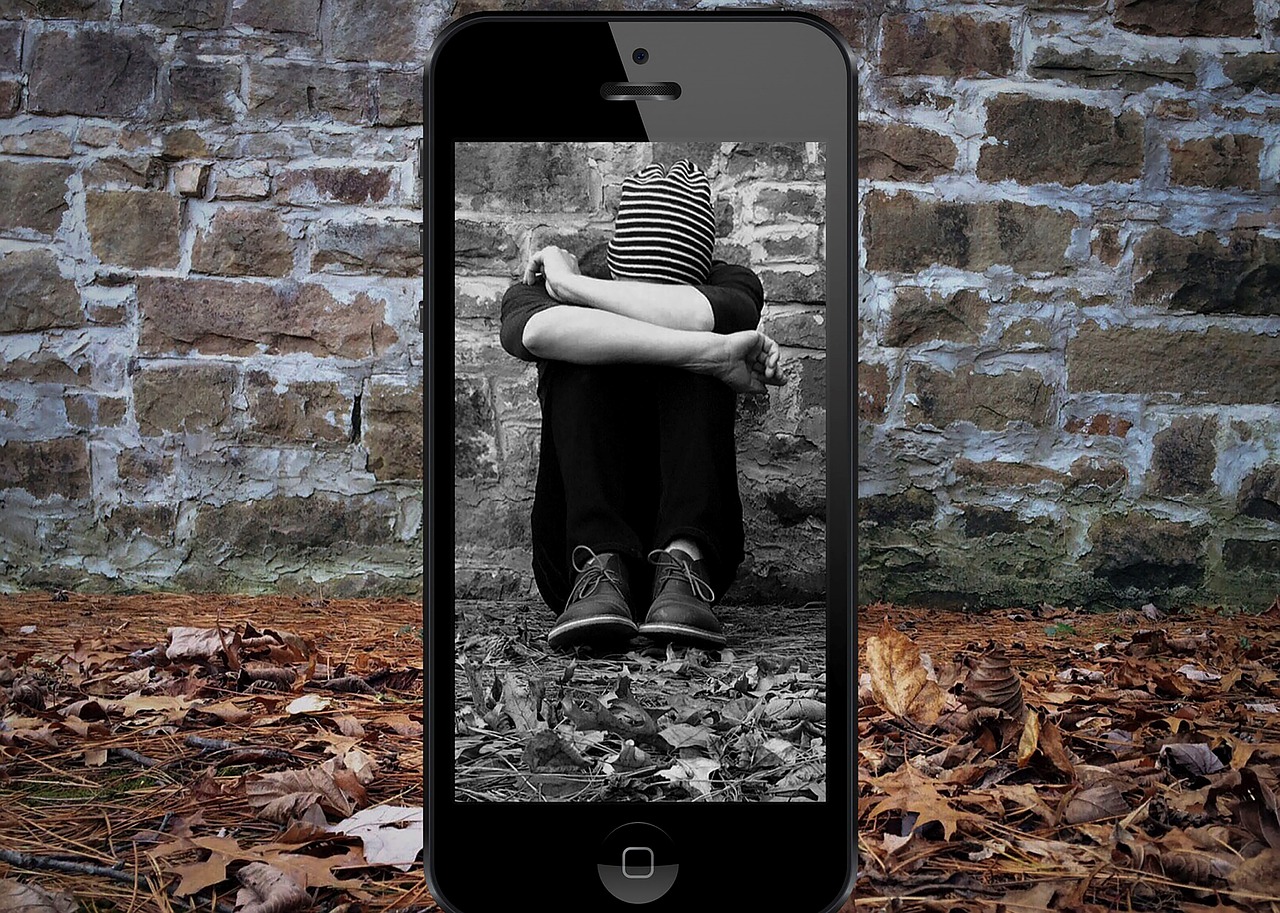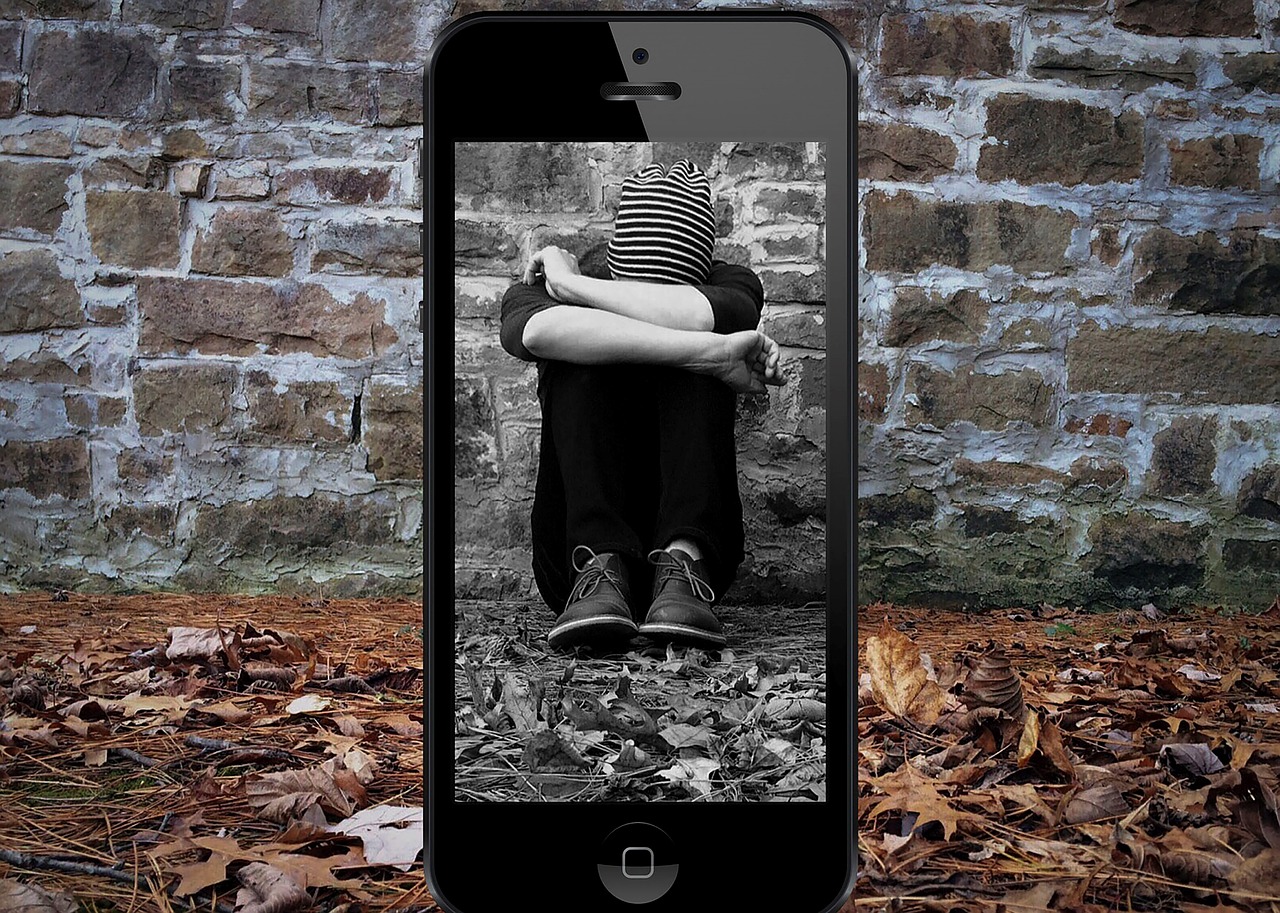The Impact of Cyberbullying on Mental Health
Cyberbullying is a pervasive issue in our digital world, and its effects on mental health are profound and alarming. With the rise of social media and online communication, the landscape of bullying has shifted from the playground to the virtual realm. This shift has made it easier for perpetrators to harass, intimidate, and embarrass their victims without facing immediate consequences. Imagine being targeted by someone who hides behind a screen, sending hurtful messages or sharing embarrassing photos with the click of a button. The anonymity of the internet can create a breeding ground for harmful behavior, affecting individuals of all ages.
The impact of cyberbullying on mental health can be devastating. Victims often experience a range of emotional responses, including anxiety, depression, and a deep sense of isolation. Unlike traditional bullying, where the victim may find refuge at home, cyberbullying can invade every aspect of life, making it feel inescapable. It's like being haunted by a ghost that follows you everywhere, leaving you in a constant state of fear and distress. This article aims to explore the prevalence of cyberbullying, its psychological effects, and potential solutions to mitigate its impact.
To grasp the full scope of cyberbullying, we must first define what it is. Cyberbullying refers to the use of digital platforms—such as social media, messaging apps, and online forums—to harass, threaten, or embarrass someone. This can take many forms, including:
- Harassment: Repeatedly sending offensive messages or threats.
- Doxxing: Sharing private information about someone without their consent.
- Impersonation: Pretending to be someone else online to damage their reputation.
- Exclusion: Intentionally excluding someone from online groups or activities.
These actions can have severe consequences for the victim, often leading to long-lasting emotional scars. Understanding the different forms of cyberbullying is crucial for recognizing and addressing the issue effectively.
The statistics surrounding cyberbullying are staggering. According to recent studies, approximately 15% to 35% of adolescents report experiencing some form of cyberbullying. This growing prevalence among young people raises concerns about their mental health and overall well-being. As technology continues to evolve, so does the nature of bullying, making it essential for parents, educators, and communities to be vigilant.
Different demographics experience cyberbullying at varying rates. Factors such as age, gender, and social background play a significant role in determining who is most affected. For instance:
| Demographic | Percentage Affected |
|---|---|
| Adolescents (12-18 years) | 25% |
| Young Adults (19-24 years) | 20% |
| Adults (25+ years) | 10% |
As we can see, adolescents are particularly vulnerable to cyberbullying. They face unique challenges that can exacerbate mental health issues, making it crucial to address their specific experiences.
Adolescents are at a critical stage of development, where peer acceptance and self-esteem are paramount. Cyberbullying can shatter their sense of security and lead to feelings of worthlessness. Imagine a teenager who is constantly bombarded with hurtful comments online; this can lead to a downward spiral of anxiety and depression. Many adolescents may struggle to cope with these feelings, often resulting in withdrawal from social activities, academic decline, and even self-harm.
While cyberbullying is often associated with youth, adults are not immune. In fact, professionals may face cyberbullying in the workplace or online communities. This can lead to stress, decreased job performance, and even career setbacks. The stigma around adult bullying often prevents victims from speaking out, leaving them to suffer in silence. It's essential to recognize that cyberbullying knows no age limits and can have serious implications for mental health at any stage of life.
The psychological effects of cyberbullying can be severe and long-lasting. Victims may experience a range of mental health disorders, including:
- Anxiety: Constant fear of being targeted can lead to heightened anxiety levels.
- Depression: Feelings of hopelessness and sadness can be overwhelming.
- Post-Traumatic Stress Disorder (PTSD): In severe cases, victims may develop PTSD, struggling with flashbacks and emotional distress.
These mental health issues can create a vicious cycle, where the victim's emotional state worsens, making it even more challenging to escape the clutches of cyberbullying.
The effects of cyberbullying can extend far beyond immediate emotional distress. Victims may face long-term consequences that impact their mental health and overall well-being. For instance, social isolation often becomes a significant issue. Victims may withdraw from friends and family, leading to a lack of support and further exacerbating their mental health struggles.
Social isolation can be particularly detrimental, as it deprives victims of the connections they need to heal. Imagine feeling alone in a crowded room; that’s how many victims of cyberbullying feel every day. This sense of isolation can lead to deeper feelings of depression and anxiety, making recovery even more challenging.
Cyberbullying can also hinder academic performance and career prospects. Victims may find it difficult to concentrate on their studies or work, leading to poor grades and job performance. The mental health struggles stemming from cyberbullying can create obstacles that make it hard for individuals to reach their full potential.
Addressing cyberbullying requires effective prevention and support strategies. Individuals, schools, and communities must work together to combat this issue and support victims. Education plays a crucial role in prevention, as awareness programs can equip young people with the tools they need to navigate the digital landscape safely.
Awareness programs focusing on digital citizenship can teach young people about the importance of empathy and respect in online interactions. By fostering a culture of kindness, we can help reduce the prevalence of cyberbullying.
Establishing strong support systems is vital for victims. Resources such as counseling services, hotlines, and community support groups can provide the assistance needed to recover from the trauma of cyberbullying. Encouraging victims to speak out and seek help can make a significant difference in their healing journey.
1. What is cyberbullying?
Cyberbullying is the use of digital platforms to harass, threaten, or embarrass someone. It can occur through social media, messaging apps, or online forums.
2. Who is most affected by cyberbullying?
Adolescents are particularly vulnerable, but adults can also experience cyberbullying in various contexts, including the workplace.
3. What are the psychological effects of cyberbullying?
Victims may experience anxiety, depression, and even PTSD, leading to long-term mental health issues.
4. How can cyberbullying be prevented?
Education and awareness programs play a crucial role in preventing cyberbullying. Encouraging empathy and respect in online interactions is essential.
5. What support is available for victims of cyberbullying?
Resources such as counseling services, hotlines, and community support groups can provide vital assistance for victims.

Understanding Cyberbullying
Cyberbullying is a modern-day menace that lurks behind the screens of our digital devices. It refers to the use of digital platforms to harass, threaten, or embarrass individuals, often in a manner that is both pervasive and insidious. Unlike traditional bullying, which typically occurs face-to-face, cyberbullying can happen anytime and anywhere, making it particularly difficult for victims to escape its reach. Imagine being taunted not just at school, but also in the comfort of your own home, where you should feel safe. This constant invasion can lead to a myriad of emotional and psychological issues.
There are various forms and methods through which cyberbullying can manifest. Some of the most common include:
- Harassment: Repeatedly sending offensive, rude, and insulting messages.
- Impersonation: Pretending to be someone else online to damage their reputation.
- Exclusion: Intentionally excluding someone from an online group or activity.
- Outing: Sharing someone's private information or secrets without their consent.
- Cyberstalking: Using the internet to stalk or harass an individual, often causing fear.
The anonymity provided by the internet can embolden bullies, allowing them to act without the immediate consequences they would face in person. This can create a false sense of security, making them feel invincible as they unleash their hurtful words and actions. The impact of this behavior can be devastating, leading to feelings of isolation, anxiety, and depression for the victims. It's crucial to understand that cyberbullying is not just a harmless prank; it can have serious implications for mental health and overall well-being.
As we delve deeper into the topic of cyberbullying, it's essential to recognize that it doesn't discriminate. People of all ages, backgrounds, and social standings can fall victim to this cruel phenomenon. Whether it's a teenager facing peer pressure or an adult dealing with workplace harassment online, the psychological toll can be immense. Understanding the various facets of cyberbullying is the first step toward combating it effectively.

Prevalence of Cyberbullying
In today's digital age, the prevalence of cyberbullying has reached alarming levels, affecting countless individuals across various demographics. According to recent studies, nearly one in five students report being bullied online at some point during their school years. This statistic is not just a number; it represents real people, real pain, and real consequences. As we dive deeper into the statistics, it's crucial to understand that cyberbullying is not limited to teenagers; it spans across different age groups and social backgrounds.
Research indicates that adolescents and young adults are particularly vulnerable, with rates of cyberbullying significantly higher among these age groups. A survey conducted by the Cyberbullying Research Center revealed that approximately 36% of students in middle and high school have experienced some form of cyberbullying. This is a staggering figure that highlights the urgent need for awareness and intervention.
To paint a clearer picture, let's take a look at the demographics of cyberbullying victims:
| Demographic Group | Prevalence Rate |
|---|---|
| Middle School Students | 30% |
| High School Students | 40% |
| College Students | 25% |
| Adults | 15% |
As the table illustrates, high school students are among the most affected, with a shocking 40% experiencing cyberbullying. But what about the adults? Surprisingly, cyberbullying is not just a youthful issue. Adults also face harassment online, with approximately 15% reporting incidents. This reveals a broader societal problem that transcends age, making it essential for all of us to be vigilant.
Furthermore, the rise of social media platforms has provided new avenues for bullies to target their victims. Platforms like Instagram, Snapchat, and TikTok have become the breeding grounds for harassment, where anonymity can embolden bullies. The digital landscape is constantly evolving, and with it, the tactics used by cyberbullies are becoming increasingly sophisticated and harmful.
In conclusion, the prevalence of cyberbullying is a pressing issue that demands our attention. With alarming statistics and a wide demographic reach, it is evident that no one is immune to its effects. As we continue to explore the psychological impacts and long-term consequences, we must also consider how we can work together to combat this pervasive problem.
- What is cyberbullying? Cyberbullying is the use of digital platforms to harass, threaten, or embarrass someone.
- Who is most affected by cyberbullying? While adolescents are particularly vulnerable, adults also experience cyberbullying.
- How can we prevent cyberbullying? Effective prevention strategies include education, awareness programs, and establishing strong support systems.

Demographics of Victims
When we talk about cyberbullying, it's crucial to recognize that it doesn't discriminate; however, certain demographics are more vulnerable than others. Research indicates that adolescents and young adults are particularly at risk, with a significant number of them experiencing online harassment during their formative years. In fact, studies reveal that approximately 15% to 20% of high school students have reported being bullied online, which is a staggering number considering the emotional and psychological toll it can take.
Interestingly, the demographics of victims often reveal patterns that can help us understand the dynamics of cyberbullying. For instance, factors such as age, gender, and social background play a pivotal role in determining who gets targeted. Below are some key insights into these demographic factors:
| Demographic Factor | Details |
|---|---|
| Age | Adolescents aged 12-18 are the most affected, with a noticeable decline in incidents as individuals enter adulthood. |
| Gender | Girls are often targeted more than boys, particularly through relational aggression, while boys may experience more direct forms of bullying. |
| Social Background | Victims from marginalized communities or those with minority identities often face a higher risk of cyberbullying. |
Moreover, the intersectionality of these factors means that a young girl from a minority background may face compounded risks compared to her peers. This highlights the importance of understanding not just the act of cyberbullying itself, but also the context in which it occurs. Victims often report feeling isolated and vulnerable, which can lead to a vicious cycle of mental health issues, including anxiety and depression.
It’s also important to note that while adolescents are often the focus, adults are not immune to cyberbullying. Professionals, particularly those in public-facing roles, may experience harassment that can impact their careers and personal lives. The stigma surrounding adult victims often prevents them from seeking help, making it essential to create a supportive environment for all victims, regardless of age.
As we delve deeper into the psychological effects of cyberbullying, it becomes evident that understanding the demographics of victims is just the tip of the iceberg. Recognizing who is most affected can lead to more targeted and effective prevention strategies, ensuring that we not only address the issue at hand but also support those who are suffering in silence.

Impact on Adolescents
Adolescents are navigating a tumultuous phase of life, filled with changes in identity, relationships, and emotions. Unfortunately, this is also the time when many young people become victims of cyberbullying. The impact of cyberbullying on adolescents can be profound, affecting their mental health and overall development in ways that can last a lifetime. Imagine trying to find your footing in a world that feels like it's constantly shifting beneath you, only to be met with harsh words and ridicule online. This experience can lead to feelings of worthlessness and despair.
Research indicates that adolescents who experience cyberbullying are at a higher risk of developing mental health issues such as anxiety, depression, and even suicidal thoughts. The anonymity of the internet can embolden bullies, making it easier for them to target their victims without facing immediate consequences. This can create a cycle of fear and isolation for the victims, who may feel trapped and unable to escape the harassment.
Moreover, the emotional toll can manifest in various ways. Victims may withdraw from social interactions, leading to a lack of support from peers, which only exacerbates their feelings of loneliness. The following are some common emotional responses that adolescents may experience as a result of cyberbullying:
- Low Self-Esteem: Constant negative feedback can chip away at a young person's self-worth.
- Increased Anxiety: The fear of being targeted can lead to heightened levels of anxiety, making it difficult for them to engage in everyday activities.
- Changes in Behavior: Victims may become more withdrawn or exhibit aggressive behaviors as a coping mechanism.
Additionally, the impact of cyberbullying can extend beyond emotional distress. Adolescents may experience difficulties in academic performance due to the distraction and stress caused by online harassment. They might find it hard to concentrate on their studies or participate in school activities, leading to a decline in grades and motivation. This can create a vicious cycle where poor academic performance further diminishes their self-esteem, making them more susceptible to bullying.
In essence, the effects of cyberbullying on adolescents can be likened to a storm that disrupts their journey of self-discovery. Just as stormy weather can obscure the sun, cyberbullying can cloud the bright future that lies ahead for these young individuals. It's crucial for parents, educators, and peers to recognize these signs and provide support to those who are suffering. By fostering an open dialogue about the challenges of cyberbullying, we can help create a safer environment where adolescents can thrive.

Impact on Adults
While most discussions around cyberbullying tend to focus on adolescents, it’s crucial to recognize that adults are not immune to its harmful effects. In today’s interconnected world, the lines between personal and professional life often blur, making adults vulnerable to online harassment in various forms. Imagine waking up to a barrage of negative comments about your work or personal life, or being targeted by a former colleague on social media. This kind of experience can be profoundly damaging, leading to a range of mental health issues.
The impact of cyberbullying on adults can manifest in several ways. Many adults report feelings of anxiety and depression as a direct result of online harassment. The constant barrage of negative messages can create a sense of fear and helplessness. Adults may find themselves withdrawing from social interactions, fearing further attacks, which can lead to a vicious cycle of isolation and despair. In fact, studies have shown that adults who experience cyberbullying are significantly more likely to report mental health issues compared to those who do not.
Moreover, the professional implications of cyberbullying can be severe. Victims may face challenges in their workplace, such as decreased productivity, strained relationships with colleagues, and even job loss. The stress from online harassment can spill over into their professional lives, affecting their ability to perform effectively. For instance, a survey indicated that over 40% of adults who experienced cyberbullying reported a decline in work performance, which can have long-lasting effects on their careers.
It’s essential to understand that the impact of cyberbullying on adults is not just limited to emotional and professional ramifications. The psychological toll can lead to physical health issues as well. Stress-related ailments, such as headaches, insomnia, and gastrointestinal problems, are common among those who suffer from the effects of online harassment. In essence, the repercussions of cyberbullying can ripple through various aspects of an adult's life, creating a complex web of challenges that can be difficult to untangle.
In summary, while cyberbullying may often be associated with younger individuals, adults are equally affected and can suffer significant mental health consequences. The emotional distress, professional setbacks, and physical health issues stemming from cyberbullying highlight the urgent need for awareness and intervention. Understanding this issue is the first step toward fostering a more supportive environment for all individuals, regardless of age.
- What is cyberbullying? Cyberbullying is the use of digital platforms to harass, embarrass, or threaten someone. It can occur through social media, text messages, or online forums.
- Who can be affected by cyberbullying? While it is often associated with teenagers, adults can also be victims of cyberbullying, facing unique challenges and mental health issues.
- What are the signs of cyberbullying in adults? Signs may include changes in mood, withdrawal from social activities, decreased work performance, and physical health problems related to stress.
- How can adults cope with cyberbullying? Seeking support from friends, family, or professionals can be beneficial. Establishing boundaries online and reporting harassment to authorities are also important steps.

Psychological Effects of Cyberbullying
Cyberbullying is not just a modern nuisance; it's a significant mental health crisis that can leave deep psychological scars on its victims. Imagine waking up every day, feeling like you're under constant surveillance, with the fear of new attacks lurking in your inbox or social media notifications. It's a reality for many, and the consequences can be devastating. Victims often experience a range of emotional and psychological issues that can affect their daily lives and overall well-being.
One of the most common effects of cyberbullying is anxiety. Victims may find themselves constantly worried about what others think of them or what might happen next. This anxiety can manifest in various ways, from panic attacks to an overwhelming sense of dread that can make even the simplest tasks feel insurmountable. It's like being trapped in a cage of fear, where every notification feels like a potential threat.
Additionally, many victims suffer from depression. The relentless nature of online harassment can lead to feelings of hopelessness and despair. Imagine feeling like you're in a dark tunnel with no way out, where every comment or message serves as a reminder of your worthlessness. This can lead to a cycle of negative thoughts, making it increasingly difficult for individuals to see a path toward recovery.
It's also essential to recognize that cyberbullying can exacerbate existing mental health conditions. For individuals already battling issues like ADHD or PTSD, the added stress from online harassment can trigger severe episodes, making it challenging to manage their mental health effectively. This intersectionality of mental health issues can create a complex web of challenges for victims.
Moreover, the effects of cyberbullying can lead to self-esteem issues. Victims often internalize the negative comments and harassment, leading them to question their self-worth. Over time, this can erode their confidence and make it harder to engage in social situations. They might withdraw from friends and family, feeling like they don't deserve love or support, which only compounds their isolation and distress.
In some cases, the psychological impact of cyberbullying can be so severe that it leads to thoughts of self-harm or even suicide. According to recent studies, a significant percentage of victims have reported contemplating these actions as a way to escape their pain. It's a heartbreaking reality that underscores the urgent need for awareness and intervention.
To better understand the psychological effects of cyberbullying, consider the following table that summarizes some common mental health issues associated with victimization:
| Mental Health Issue | Description |
|---|---|
| Anxiety | Constant worry and fear, often leading to panic attacks. |
| Depression | A pervasive sense of hopelessness and despair. |
| Low Self-Esteem | Feelings of worthlessness and self-doubt stemming from negative comments. |
| Social Isolation | Withdrawal from social interactions due to fear of judgment. |
| Suicidal Thoughts | Consideration of self-harm or suicide as an escape from pain. |
As we can see, the psychological effects of cyberbullying are profound and far-reaching. It's crucial for friends, family, and educators to recognize the signs and provide support to those affected. By fostering open conversations about mental health and creating safe spaces for victims to share their experiences, we can begin to mitigate the impact of this pervasive issue.
- What is cyberbullying? Cyberbullying is the use of digital platforms to harass, threaten, or embarrass someone.
- How does cyberbullying affect mental health? It can lead to anxiety, depression, low self-esteem, and even suicidal thoughts.
- Who is most affected by cyberbullying? While adolescents are particularly vulnerable, adults also experience cyberbullying.
- What can be done to prevent cyberbullying? Education, awareness programs, and strong support systems are essential in combating cyberbullying.
- Where can victims find support? Victims can seek help from counselors, support groups, and online resources dedicated to mental health.

Long-term Consequences
The repercussions of cyberbullying can stretch far beyond the immediate emotional turmoil experienced by victims. Many individuals who endure cyberbullying find themselves grappling with long-lasting effects that can shape their lives in profound ways. Imagine carrying the weight of anxiety and depression as a constant companion; that's the reality for many who have faced online harassment. The scars left by cyberbullying can manifest in various aspects of life, affecting not just mental health but also social interactions, academic performance, and professional opportunities.
One of the most significant long-term consequences of cyberbullying is the development of chronic mental health issues. Victims often report feelings of anxiety, depression, and even suicidal ideation. These mental health challenges can become a vicious cycle, where the emotional pain leads to withdrawal from social activities, which in turn exacerbates feelings of isolation and loneliness. This cycle can be particularly damaging during formative years, as it can hinder personal development and the ability to form healthy relationships.
Moreover, the impact of cyberbullying can extend into the academic realm. Students who are bullied online may struggle to concentrate on their studies, leading to a decline in academic performance. The stress and anxiety associated with being targeted can create an environment where learning becomes secondary to simply trying to cope with the emotional fallout. This can result in lower grades, decreased motivation, and even a higher likelihood of dropping out of school.
In the professional world, adults who have experienced cyberbullying may face challenges in their careers. The psychological toll can lead to decreased productivity, difficulty in maintaining relationships with colleagues, and even job loss. For instance, an individual who has been bullied online may become overly cautious in their interactions, fearing further harassment or judgment. They might avoid social gatherings or professional networking events, which can severely limit career advancement opportunities.
Social isolation is another critical long-term consequence that can arise from cyberbullying. Victims often withdraw from friends and family, feeling ashamed or embarrassed about their experiences. This withdrawal can lead to a lack of support systems, making it even harder to cope with the emotional distress caused by bullying. When individuals feel they have no one to turn to, the risk of developing severe mental health disorders increases significantly.
To illustrate the long-term effects of cyberbullying, consider the following table that summarizes key areas impacted:
| Area Affected | Potential Long-term Consequences |
|---|---|
| Mental Health | Anxiety, depression, suicidal thoughts |
| Academic Performance | Lower grades, decreased motivation, higher dropout rates |
| Professional Life | Decreased productivity, job loss, limited networking opportunities |
| Social Relationships | Increased isolation, difficulty forming new relationships |
Ultimately, the long-term consequences of cyberbullying can create a ripple effect, influencing not only the individual victim but also their families, friends, and communities. It’s essential to recognize these potential outcomes and work towards creating a supportive environment that fosters resilience and healing.
- What is cyberbullying? Cyberbullying involves the use of digital platforms to harass, threaten, or embarrass individuals.
- How prevalent is cyberbullying? Cyberbullying is increasingly common, especially among adolescents and young adults, with many reporting experiences of online harassment.
- What are the psychological effects of cyberbullying? Victims may experience anxiety, depression, and in severe cases, suicidal thoughts.
- Can adults be affected by cyberbullying? Yes, adults can also experience cyberbullying, which can impact their mental health and professional lives.
- What can be done to prevent cyberbullying? Effective prevention strategies include education, awareness programs, and strong support systems for victims.

Social Isolation
Social isolation is one of the most profound and debilitating effects of cyberbullying. Victims often find themselves feeling alienated, as if they are stuck in a bubble, watching others enjoy life while they are trapped in a whirlwind of negativity. The digital nature of cyberbullying can make it even more isolating; unlike traditional bullying, which might occur in physical spaces like schools or workplaces, cyberbullying can infiltrate the safe spaces of home and online communities. This invasion can lead to a sense of helplessness and despair.
Imagine being in a crowded room, yet feeling completely alone. That's what many victims of cyberbullying experience. They may withdraw from social activities, fearing judgment or further harassment. This withdrawal can become a vicious cycle: the more they isolate themselves, the more their mental health deteriorates, and the less likely they are to engage with friends and family. The emotional toll can be immense, leading to feelings of worthlessness and despair.
Furthermore, the stigma associated with being a victim can prevent individuals from seeking help. They may worry that others will not understand their plight or will blame them for the bullying. This fear often exacerbates their sense of isolation. In fact, studies have shown that victims of cyberbullying are significantly more likely to experience feelings of loneliness and depression compared to their peers who have not been bullied.
To illustrate the impact of social isolation on mental health, consider the following table that outlines the correlation between cyberbullying, social isolation, and mental health outcomes:
| Factor | Impact |
|---|---|
| Cyberbullying | Increases feelings of loneliness and despair |
| Social Isolation | Exacerbates anxiety and depression |
| Withdrawal from Social Activities | Leads to decreased support and increased feelings of worthlessness |
In conclusion, social isolation is not just a side effect of cyberbullying; it can be a catalyst for deeper mental health issues. Victims may feel trapped in a cycle of loneliness that is difficult to break. As a community, it is crucial to recognize these signs and provide support to those affected. By fostering open conversations about mental health and bullying, we can help individuals feel less isolated and more empowered to seek the help they need.
- What should I do if I witness cyberbullying? - If you see someone being bullied online, it's important to report it to the platform and offer support to the victim.
- How can I support a friend who is a victim of cyberbullying? - Listen to them, validate their feelings, and encourage them to seek professional help if needed.
- Are there resources available for victims of cyberbullying? - Yes, many organizations offer counseling, support groups, and hotlines for those affected by cyberbullying.

Impact on Academic and Professional Life
The impact of cyberbullying on an individual's academic and professional life can be profound and far-reaching. Imagine a student who, once enthusiastic about learning, suddenly finds themselves dreading school due to the constant fear of online harassment. This scenario is not uncommon; many victims of cyberbullying experience a drastic decline in their academic performance. As their mental health deteriorates, so does their ability to concentrate, participate in class, and complete assignments. The pressure to maintain grades while dealing with emotional distress can lead to a vicious cycle of anxiety and failure.
In the professional realm, the effects can be equally devastating. Adults facing cyberbullying may find themselves distracted at work, leading to decreased productivity and strained relationships with colleagues. The psychological toll can manifest in various ways, such as increased absenteeism or even a complete withdrawal from social interactions in the workplace. This not only affects their job performance but can also hinder career advancement opportunities. Employers may notice a decline in the quality of work or a lack of engagement, which can ultimately jeopardize job security.
Furthermore, the stigma associated with being a victim can prevent individuals from seeking help, exacerbating their struggles. Many victims fear that speaking out will lead to further bullying or professional repercussions. This silence can lead to a sense of isolation, making it even harder for them to navigate academic or work-related challenges. The emotional scars left by cyberbullying can linger long after the harassment has ceased, affecting one's self-esteem and confidence in their abilities.
To illustrate the impact of cyberbullying on academic and professional life, consider the following table:
| Impact Area | Consequences |
|---|---|
| Academic Performance | Decreased grades, lack of motivation, increased absenteeism |
| Social Interaction | Isolation from peers, strained relationships, fear of social settings |
| Professional Life | Reduced productivity, absenteeism, hindered career growth |
| Mental Health | Anxiety, depression, decreased self-esteem |
In conclusion, the repercussions of cyberbullying extend beyond immediate emotional distress, affecting both academic and professional trajectories. It is crucial for educational institutions and workplaces to foster environments where individuals feel safe and supported, encouraging open dialogues about mental health and bullying. Only then can we hope to mitigate the damaging effects of cyberbullying on future generations.
- What is cyberbullying? Cyberbullying involves the use of digital platforms to harass, threaten, or embarrass someone.
- Who is most affected by cyberbullying? Adolescents and young adults are particularly vulnerable, but adults can also be victims.
- What are the signs of cyberbullying? Signs may include sudden changes in behavior, withdrawal from social interactions, and declining academic or work performance.
- How can cyberbullying be prevented? Education about digital citizenship and establishing strong support systems are crucial in preventing cyberbullying.
- What resources are available for victims? Victims can seek counseling, support groups, and educational programs to help cope with their experiences.

Prevention and Support Strategies
Addressing the issue of cyberbullying is not just about reacting to incidents; it’s about creating a proactive environment where such behaviors are less likely to occur. are essential in combating this pervasive issue. First and foremost, education is crucial. By informing individuals—especially young people—about the dangers and implications of cyberbullying, we can foster a culture of respect and empathy. Schools and communities should implement comprehensive awareness programs that teach digital citizenship, emphasizing the importance of responsible online behavior. This knowledge empowers individuals to recognize cyberbullying when they see it and to take action, either by standing up against it or by seeking help.
Moreover, support systems are vital for those who have been affected by cyberbullying. Victims often feel isolated and powerless, making it essential to establish a network of resources that can provide assistance. This support can come in various forms, including counseling services, peer support groups, and community outreach programs. For instance, schools can create safe spaces where students can discuss their experiences without fear of judgment. Additionally, involving parents in these conversations can bridge the gap between home and school, ensuring that children feel supported both online and offline.
Another effective strategy is the implementation of clear policies regarding cyberbullying within educational institutions and workplaces. These policies should outline the consequences of such behavior and provide a clear procedure for reporting incidents. When individuals know that there are serious repercussions for engaging in cyberbullying, they may think twice before participating in such actions. Transparency in these policies not only holds individuals accountable but also builds trust within the community.
In addition to these strategies, fostering open communication is essential. Encouraging individuals to speak up about their experiences can help reduce the stigma associated with being a victim of cyberbullying. It’s important to create an environment where people feel safe discussing their feelings and experiences without fear of retaliation or embarrassment. This can be achieved through regular workshops, seminars, and discussions that highlight the importance of mental health and well-being.
To summarize, the fight against cyberbullying requires a multifaceted approach that combines education, support, and clear policies. By working together as a community—schools, parents, and individuals—we can create a safer digital landscape for everyone. Here’s a quick overview of the key strategies:
| Strategy | Description |
|---|---|
| Education | Implement awareness programs on digital citizenship and the impact of cyberbullying. |
| Support Systems | Establish counseling services and peer support groups for victims. |
| Clear Policies | Create and enforce policies regarding cyberbullying in schools and workplaces. |
| Open Communication | Encourage discussions about experiences and feelings related to cyberbullying. |
By implementing these strategies, we can work towards a society that not only recognizes the seriousness of cyberbullying but also actively seeks to prevent it. Together, we can support victims and help them regain their confidence and sense of belonging.
What is cyberbullying?
Cyberbullying is the use of digital platforms to harass, threaten, or embarrass someone. It can take many forms, including social media posts, text messages, and online gaming interactions.
How can I recognize if someone is being cyberbullied?
Signs of cyberbullying may include withdrawal from social activities, changes in behavior or mood, and reluctance to use digital devices. If you notice these signs, it’s important to approach the individual with care and support.
What should I do if I witness cyberbullying?
If you witness cyberbullying, it’s crucial to report it to a trusted adult or authority figure. Standing up for the victim can also help, but ensure that you do so in a way that does not escalate the situation.
Are there resources available for victims of cyberbullying?
Yes, many organizations offer resources for victims of cyberbullying, including hotlines, counseling services, and support groups. It’s important for victims to know they are not alone and that help is available.

Role of Education
Education plays a crucial role in preventing cyberbullying and fostering a safe digital environment. It’s not just about teaching kids how to use technology; it’s about instilling values of empathy, respect, and responsibility. Imagine a world where students understand the impact of their words and actions online, much like they would in face-to-face interactions. This is where educational institutions can step in to make a significant difference.
Schools can implement comprehensive awareness programs that address the issue of cyberbullying directly. These programs should include discussions about what cyberbullying is, its effects on victims, and how to report incidents. By integrating these topics into the curriculum, educators can help students recognize harmful behaviors and understand the importance of standing up against bullying. For instance, role-playing activities can be particularly effective in helping students empathize with victims and understand the emotional toll of cyberbullying.
Furthermore, teaching digital citizenship is essential. This concept encompasses more than just internet safety; it includes understanding one’s rights and responsibilities in the digital world. By educating students on how to navigate online spaces responsibly, schools can empower them to make informed decisions. This education should cover:
- How to protect personal information
- Recognizing harmful content
- Understanding the permanence of online actions
- Respecting others’ opinions and privacy
In addition, involving parents in educational initiatives can amplify the impact. Schools can organize workshops that equip parents with the necessary tools to guide their children through the digital landscape. When parents and educators work together, it creates a united front against cyberbullying. This collaboration ensures that children receive consistent messages about online behavior both at school and at home.
Moreover, schools should establish clear policies regarding cyberbullying. These policies should outline the consequences of such behavior and provide a framework for reporting incidents. When students know that their school takes cyberbullying seriously, they are more likely to speak up when they or someone they know is being targeted. Transparency in how these situations are handled can also foster a sense of trust within the student body.
In conclusion, the role of education in combating cyberbullying cannot be overstated. By fostering a culture of respect and understanding, schools can help create a safer online environment for everyone. It’s about equipping the next generation with the tools they need to navigate the digital world responsibly and compassionately. As we look to the future, let’s hope that educational institutions embrace this responsibility wholeheartedly.
Q: How can schools effectively teach students about cyberbullying?
A: Schools can implement interactive programs that include role-playing, discussions, and digital citizenship lessons to help students understand the impact of cyberbullying.
Q: What role do parents play in preventing cyberbullying?
A: Parents can support educational initiatives by attending workshops, discussing online behavior with their children, and fostering open communication about their digital experiences.
Q: Are there specific signs that indicate a child may be a victim of cyberbullying?
A: Yes, signs may include sudden changes in behavior, withdrawal from social activities, or a decline in academic performance. It's essential to maintain open lines of communication with children to identify these issues early.
Q: What should a student do if they witness cyberbullying?
A: Students should report the incident to a trusted adult or school authority, as well as support the victim by showing empathy and encouraging them to seek help.

Support Systems for Victims
When it comes to dealing with the aftermath of cyberbullying, having a robust support system can make all the difference in the world. It's like having a safety net when you're walking a tightrope; it provides reassurance and stability during turbulent times. Victims of cyberbullying often feel isolated and overwhelmed, so it’s crucial to connect them with resources that can help them navigate their emotional and psychological turmoil.
First and foremost, friends and family play an essential role in providing emotional support. Open communication can help victims express their feelings and fears, making them feel less alone. It’s important for loved ones to listen without judgment and to validate the victim’s experiences. This can foster a sense of belonging and security, which is vital for healing.
In addition to personal support, professional counseling is a valuable resource. Mental health professionals can offer strategies and coping mechanisms tailored to the specific challenges faced by victims of cyberbullying. Therapy can also provide a safe space for individuals to explore their feelings and develop resilience against the emotional scars left by their experiences.
Schools and educational institutions also have a significant role to play in supporting victims. Many schools have implemented anti-bullying programs that educate students about the effects of cyberbullying and establish clear reporting procedures. These programs often include workshops and seminars designed to raise awareness, promote empathy, and foster a culture of respect. In addition, designated school counselors can serve as a reliable point of contact for students in distress.
Furthermore, community organizations and online platforms can offer additional layers of support. Many non-profits focus on mental health and bullying prevention, providing resources such as hotlines, chat services, and support groups. These organizations can connect victims with others who have experienced similar situations, creating a sense of community that can be incredibly healing.
To summarize, the support systems for victims of cyberbullying can be multi-faceted, encompassing:
- Emotional Support: Friends and family who listen and validate feelings.
- Professional Counseling: Access to therapists who specialize in trauma and bullying.
- School Programs: Anti-bullying initiatives and counseling services in educational settings.
- Community Resources: Non-profit organizations providing hotlines and support groups.
By leveraging these support systems, victims of cyberbullying can begin to reclaim their sense of self-worth and navigate the path toward recovery. It’s crucial for everyone—friends, family, educators, and community members—to work together to create an environment where victims feel safe, supported, and empowered to move forward.
Q1: What should I do if I am being cyberbullied?
A1: If you're experiencing cyberbullying, it's essential to document the incidents, block the bully on all platforms, and report the behavior to the relevant authorities. Seek support from friends, family, or a mental health professional.
Q2: How can I support someone who is a victim of cyberbullying?
A2: Listen to them without judgment, encourage them to talk about their feelings, and help them access professional support if needed. Remind them that they are not alone and that it's okay to seek help.
Q3: Are there any legal actions I can take against cyberbullying?
A3: Yes, depending on the severity of the bullying, you may be able to pursue legal action. Consult with a legal professional who specializes in cyber law to understand your options.
Q4: How can schools prevent cyberbullying?
A4: Schools can implement comprehensive anti-bullying policies, conduct educational programs about the effects of bullying, and create a safe reporting system for students to share their experiences.
Frequently Asked Questions
- What is cyberbullying?
Cyberbullying is the act of using digital platforms, such as social media, text messages, or websites, to harass, threaten, or embarrass someone. It can take many forms, including spreading rumors, sending hurtful messages, or sharing embarrassing photos without consent.
- How prevalent is cyberbullying among young people?
Cyberbullying has become increasingly common, with studies showing that a significant percentage of adolescents and young adults have experienced it. Statistics indicate that nearly 1 in 5 students report being bullied online, highlighting the urgent need for awareness and prevention efforts.
- Who is most affected by cyberbullying?
While cyberbullying can affect anyone, certain demographics are more vulnerable, particularly adolescents. Factors such as age, gender, and social background can influence the likelihood of becoming a victim. For instance, young girls are often targeted more frequently than boys.
- What are the psychological effects of cyberbullying?
The psychological impact of cyberbullying can be severe, leading to issues such as anxiety, depression, and low self-esteem. Victims may also experience feelings of isolation and helplessness, which can further exacerbate their mental health struggles.
- Can cyberbullying affect adults?
Absolutely! While often associated with youth, adults can also be victims of cyberbullying. It can affect their mental health, relationships, and even professional lives, leading to stress and anxiety in the workplace.
- What are the long-term consequences of cyberbullying?
The effects of cyberbullying can linger long after the harassment stops. Victims may face ongoing mental health challenges, social isolation, and difficulties in academic or professional settings, impacting their overall quality of life.
- How can we prevent cyberbullying?
Prevention starts with education. Schools and communities can implement awareness programs that teach digital citizenship and promote kindness online. Encouraging open conversations about the issue can also empower individuals to speak out against cyberbullying.
- What support systems are available for victims of cyberbullying?
There are various resources available for victims of cyberbullying, including counseling services, support groups, and hotlines. Establishing a strong support network, whether through friends, family, or community organizations, can help victims cope with their experiences.



















